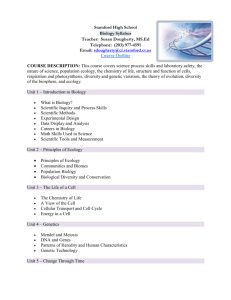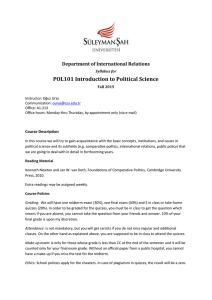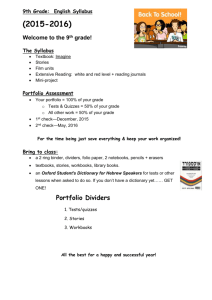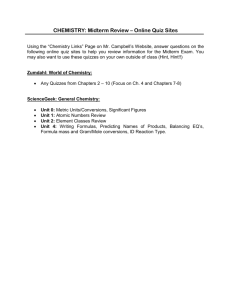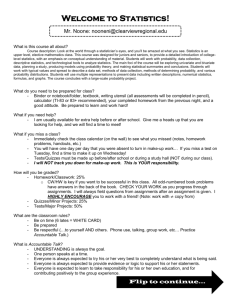Physical Science Syllabus
advertisement
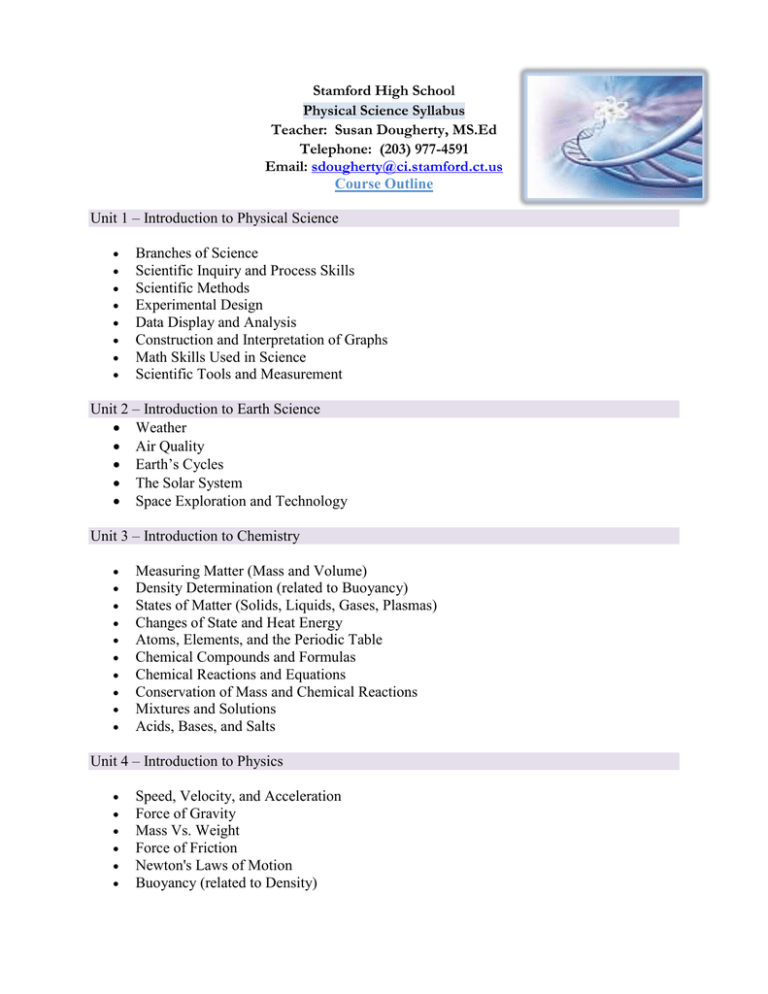
Stamford High School Physical Science Syllabus Teacher: Susan Dougherty, MS.Ed Telephone: (203) 977-4591 Email: sdougherty@ci.stamford.ct.us Course Outline Unit 1 – Introduction to Physical Science Branches of Science Scientific Inquiry and Process Skills Scientific Methods Experimental Design Data Display and Analysis Construction and Interpretation of Graphs Math Skills Used in Science Scientific Tools and Measurement Unit 2 – Introduction to Earth Science Weather Air Quality Earth’s Cycles The Solar System Space Exploration and Technology Unit 3 – Introduction to Chemistry Measuring Matter (Mass and Volume) Density Determination (related to Buoyancy) States of Matter (Solids, Liquids, Gases, Plasmas) Changes of State and Heat Energy Atoms, Elements, and the Periodic Table Chemical Compounds and Formulas Chemical Reactions and Equations Conservation of Mass and Chemical Reactions Mixtures and Solutions Acids, Bases, and Salts Unit 4 – Introduction to Physics Speed, Velocity, and Acceleration Force of Gravity Mass Vs. Weight Force of Friction Newton's Laws of Motion Buoyancy (related to Density) I. II. III. IV. V. Atoms and Particle Physics Kinetic and Potential Energy Work, Energy, and Power Simple Machines Heat Transfer (Conduction, Convection, and Radiation) Electricity (Static Vs. Current) Magnetism Electromagnetism Light and Electromagnetic Waves Light and Vision Sound and Mechanical Waves Sound and Hearing Renewable Vs. Nonrenewable Energy Resources Student Expectations A large three ring binder has been provided and is to be kept in class as a Science portfolio. This portfolio organizes all class work, projects, quizzes and tests. Students will come to class prepared with class materials, and a pen /pencil. Students will maintain organized notes and portfolio. Students will complete all projects, class assignments, and make-up tests in a timely manner. Adherence at all times to the Attendance Policy and the Code of Conduct for Stamford High School. Grading Policy Students will be assessed through class participation, a portfolio, homework, quizzes and tests. The quarterly grade will be averaged as follows: 25% Quizzes and tests 15% Science Notebook 15% Projects (25% in quarters with no midterm or final exam) 10% Midterm 10% Final 10% Homework 15% Class participation and behavior Make-up for tests, other work or extra help can be made any day before school or after school Monday through Thursday or after school by appointment. Student Learning Outcomes Upon completion of this course, students will demonstrate the ability to: 1. Develop a greater degree of scientific literacy. 2. Demonstrate an understanding of science tools for the purpose of interpreting scientific data. 3. Demonstrate an understanding of nature’s rules and physical phenomena. 4. Demonstrate an understanding of atomic and molecular properties, structure, and behavior 5. Apply basic concepts of physics and chemistry to solving problems in the laboratory. Parent Signature __________________________________________________________ Date ___________________________________________________________________
